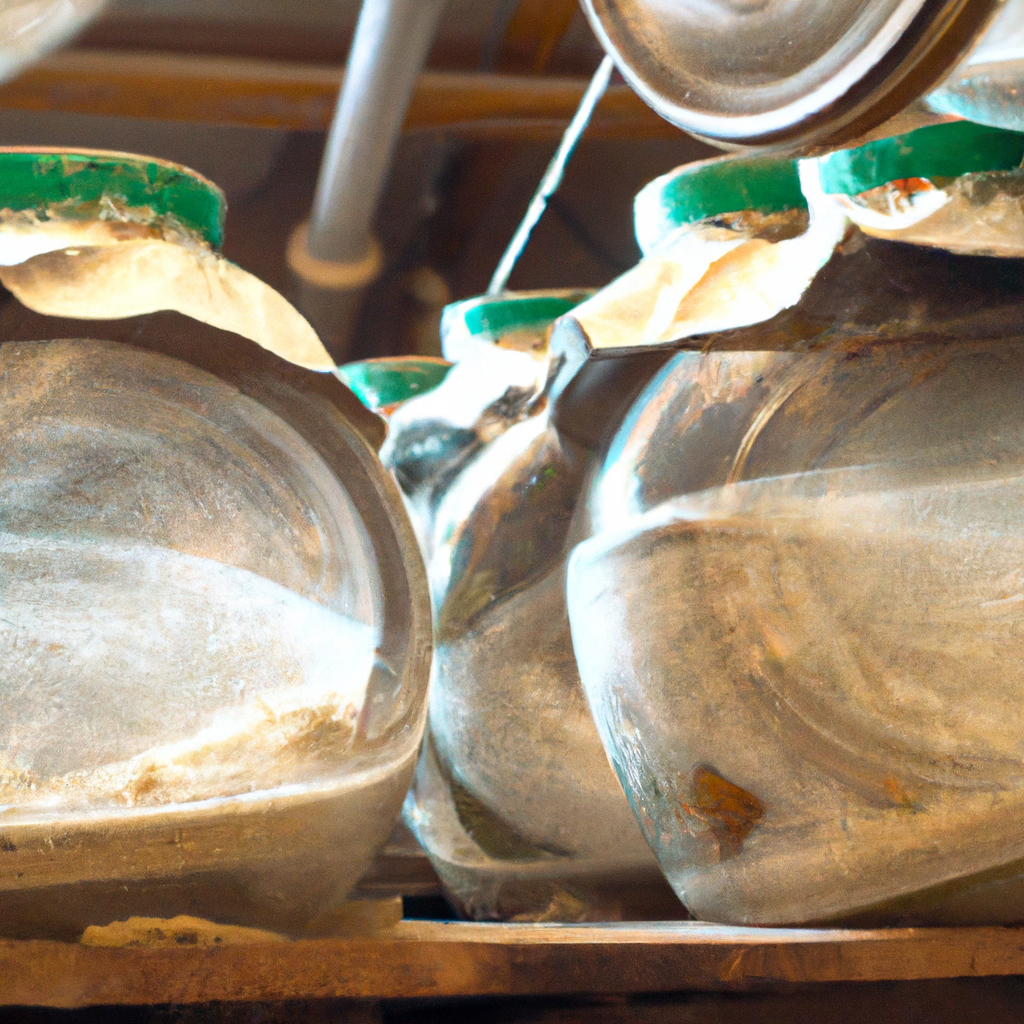Fermentation in Food Production: A Comprehensive Guide
Fermentation is a process that has been used for thousands of years to produce various types of foods and beverages. It is a natural process that occurs when microorganisms, such as bacteria, yeast, or fungi, convert carbohydrates into alcohol, acids, or gases. Fermentation is an essential part of many food production processes, including the production of bread, cheese, wine, beer, and yogurt. In this article, we will explore the fermentation process, its benefits, and the different types of fermented foods.
The Fermentation Process
The fermentation process is a complex biochemical reaction that occurs in the absence of oxygen. It involves the breakdown of carbohydrates, such as sugars and starches, into simpler compounds, such as alcohol, acids, or gases. The process is initiated by the presence of microorganisms, such as bacteria, yeast, or fungi, which convert the carbohydrates into these simpler compounds.
The fermentation process has three main stages:
1. Glycolysis: In this stage, glucose is broken down into pyruvate, which is then converted into various compounds, depending on the type of fermentation.
2. Fermentation: In this stage, the pyruvate is converted into either alcohol, acids, or gases, depending on the type of microorganism involved.
3. Regeneration: In this stage, the microorganisms regenerate the compounds needed for glycolysis to continue.
Benefits of Fermentation in Food Production
Fermentation has several benefits in food production, including:
1. Preservation: Fermentation helps preserve foods by inhibiting the growth of harmful bacteria and other microorganisms. The acids and other compounds produced during fermentation create an environment that is hostile to these microorganisms.
2. Flavor: Fermentation can enhance the flavor and aroma of foods. The compounds produced during fermentation can give foods a sour, tangy, or fruity flavor.
3. Digestibility: Fermentation can increase the digestibility of certain foods, such as bread and dairy products. The enzymes produced during fermentation can break down complex carbohydrates and proteins into simpler compounds that are easier to digest.
Types of Fermented Foods
There are several types of fermented foods, each with their unique flavor and characteristics. Some of the most common types of fermented foods include:
1. Bread: Bread is made through the process of yeast fermentation. The yeast converts the sugars in the dough into carbon dioxide gas, which causes the bread to rise.
2. Cheese: Cheese is made by adding bacteria or fungi to milk. The microorganisms convert the lactose in the milk into lactic acid, which causes the milk to curdle and form cheese.
3. Wine: Wine is made by fermenting grapes or other fruits. The yeast converts the sugars in the fruit into alcohol, which gives wine its characteristic flavor and aroma.
4. Beer: Beer is made by fermenting grains, such as barley or wheat. The yeast converts the sugars in the grains into alcohol, which gives beer its characteristic flavor and bitterness.
5. Yogurt: Yogurt is made by adding bacteria to milk. The bacteria convert the lactose in the milk into lactic acid, which causes the milk to thicken and form yogurt.
Microbial Fermentation
Microbial fermentation is the type of fermentation that involves the use of microorganisms, such as bacteria, yeast, or fungi. These microorganisms convert the carbohydrates in foods into simpler compounds, such as alcohol, acids, or gases.
The most common microorganisms used in fermentation are lactic acid bacteria, which are used to produce foods such as yogurt, sauerkraut, and pickles. Yeasts are also commonly used in fermentation to produce alcoholic beverages such as beer and wine.
Conclusion
Fermentation is a natural process that has been used for thousands of years to produce various types of foods and beverages. It is a complex biochemical reaction that involves the conversion of carbohydrates into simpler compounds, such as alcohol, acids, or gases. Fermentation has several benefits in food production, including preservation, flavor enhancement, and increased digestibility. There are several types of fermented foods, each with their unique flavor and characteristics. Microbial fermentation is the type of fermentation that involves the use of microorganisms, such as bacteria, yeast, or fungi.







